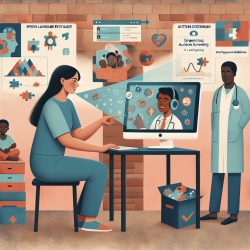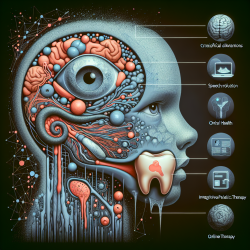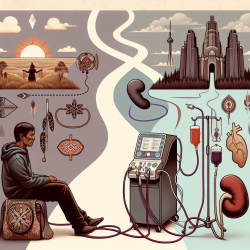As a practitioner in the field of speech therapy, understanding the nuances of bilingual aphasia recovery is essential for providing the best care to your patients. A recent study titled "Performance of Bilingual Cuban-American Aphasic Patients on a Task of Body Part Identification" offers valuable insights that can enhance your therapeutic strategies.
The study, conducted by Lillian Glass, aimed to examine the responses of bilingual Cuban-American aphasic patients to a verbally presented body part identification task. The findings revealed significant patterns that can inform and improve clinical practices. Here, we delve into the key takeaways and practical applications of this research.
Key Findings
The study involved six non-aphasic and eight aphasic Cuban immigrants who were tested on their ability to identify body parts in both Spanish (their mother tongue) and English (their second language). The results indicated that:
- Participants made fewer errors in their first learned language (Spanish) compared to their second acquired language (English).
- Both aphasic and control groups exhibited more verbal paraphasic errors than literal paraphasic errors in English, whereas in Spanish, only the aphasic group made such errors.
- Emotional and affective ties to the mother tongue played a significant role in language recovery and preference.
Practical Applications
Based on these findings, here are some strategies you can implement in your practice:
1. Prioritize the Mother Tongue in Early Therapy
Given that participants showed better performance in their mother tongue, it may be beneficial to focus initial therapy sessions on the patient's first language. This can help build confidence and reduce frustration, paving the way for more effective rehabilitation.
2. Consider Emotional Ties
Patients often have stronger emotional connections to their mother tongue, which can aid in recovery. Incorporating culturally relevant materials and contexts into therapy can enhance engagement and outcomes.
3. Address Both Verbal and Literal Paraphasias
The study found distinct patterns of paraphasic errors in different languages. Tailoring your therapeutic approaches to address both types of errors can lead to more comprehensive language recovery.
Encouraging Further Research
While this study provides valuable insights, it also highlights the need for further research in bilingual aphasia. Practitioners are encouraged to explore additional studies and contribute to this evolving field. By doing so, we can collectively enhance our understanding and improve therapeutic interventions for bilingual aphasic patients.
To read the original research paper, please follow this link: Performance of Bilingual Cuban-American Aphasic Patients on a Task of Body Part Identification.










